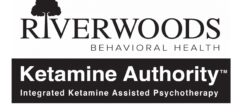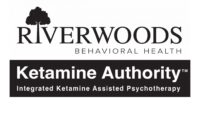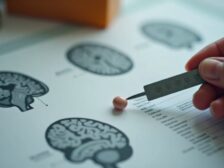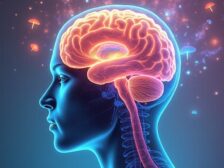
We've identified seven innovative tips for addiction relapse prevention that combine state-of-the-art therapies with traditional approaches. These include exploring Ketamine-Assisted Psychotherapy, selecting personalized treatment programs, preparing thoroughly for sessions, integrating post-session reflections, combining ketamine with established therapies, managing potential side effects, and implementing long-term prevention strategies. Each tip focuses on enhancing neuroplasticity, addressing underlying issues, and building resilience against relapse. By embracing these innovative methods alongside proven techniques like support networks, ongoing therapy, lifestyle modifications, and mindfulness practices, we can greatly improve our chances of sustained recovery. Let's explore deeper into each tip to understand how they can revolutionize our approach to addiction treatment.
Understanding Ketamine-Assisted Psychotherapy
Ketamine-assisted psychotherapy (KAP) is emerging as a promising approach in addiction relapse prevention. This innovative therapy combines the administration of ketamine, a dissociative anesthetic, with traditional psychotherapy techniques. We're seeing encouraging results in patients struggling with substance use disorders and chronic relapse patterns.
KAP works through several mechanisms. To begin with, ketamine's neurotransmitter modulation affects brain chemistry, potentially disrupting addictive patterns and creating a window for therapeutic intervention. It's believed to enhance neuroplasticity, allowing for new neural connections and thought patterns to form.
Additionally, the dissociative effects of ketamine can provide patients with a unique viewpoint on their addiction, often leading to deep understandings.
The therapeutic setting is essential in KAP. Patients receive ketamine in a controlled environment under medical supervision, followed by guided therapy sessions. This integration helps process the ketamine experience and apply understandings to recovery.
It's crucial to recognize that KAP isn't a standalone treatment but part of an extensive approach to addiction management. We're still researching its long-term efficacy, but early studies suggest it may greatly reduce relapse rates in some individuals.
Selecting the Right Treatment Program
While innovative therapies like KAP show promise, they're not suitable for everyone. Selecting the right treatment program requires careful consideration of individual needs and circumstances. We recommend undergoing a personalized assessment with a qualified addiction specialist to determine the most appropriate course of action.
When evaluating treatment programs, consider the following factors:
- Evidence-based practices: Look for programs that employ scientifically-proven methods and stay current with research developments.
- Program flexibility: Seek options that can adapt to your specific needs and allow for adjustments as your recovery progresses.
- All-encompassing approach: Choose programs that address both the physical and psychological aspects of addiction.
- Aftercare support: Confirm the program includes a strong plan for ongoing care and relapse prevention.
It's essential to remember that recovery is a unique process for each individual.
We encourage you to ask questions, voice concerns, and actively participate in the decision-making process. By selecting a treatment program that aligns with your goals and values, you'll increase your chances of long-term success in overcoming addiction and maintaining sobriety.
Preparing for Your First Session
Once you've selected a suitable treatment program, preparing for your first session is an important step in your recovery process. We recommend taking some time to reflect on your goals and what you hope to achieve through therapy. It's vital to set realistic session expectations and be open to the process.
Consider the following preparation checklist:
| Task | Purpose | Benefit |
|---|---|---|
| List concerns | Prioritize issues | Focused treatment |
| Gather history | Provide background | Informed approach |
| Set goals | Define objectives | Measurable progress |
Therapist selection is another significant aspect of preparation. We suggest researching your assigned therapist's background and specialties. This knowledge can help you feel more comfortable and confident going into your first session.
Remember, it's normal to feel anxious or uncertain. We encourage you to write down any questions you have about the therapy process or your specific situation. Bringing these to your first session can help address concerns and establish a productive therapeutic relationship from the start.
Lastly, we advise gathering any relevant medical records or previous treatment information. This data can provide useful information for your therapist and help tailor your treatment plan effectively.
Integrating Insights Post-Session
After completing your first therapy session, it's time to focus on integrating the understanding you've gained. Post-session reflection is essential for solidifying observations and preparing for future progress.
We recommend setting aside dedicated time for therapeutic journaling, allowing you to process your thoughts and emotions more deeply.
To effectively integrate your observations, consider the following steps:
- Review session notes: Revisit any notes you've taken during the session, highlighting key points and revelations.
- Practice mindfulness: Engage in mindfulness exercises to stay present with your emotions and thoughts as you reflect.
- Apply new techniques: Implement any coping strategies or exercises discussed during the session in your daily life.
- Connect with support: Share your observations with trusted friends or support group members to reinforce your learning.
Combining Ketamine With Traditional Therapies
The integration of ketamine therapy with traditional addiction treatment approaches represents a promising frontier in relapse prevention.
We're seeing encouraging results when combining ketamine's unique neuroplasticity-enhancing properties with established therapies like cognitive-behavioral therapy (CBT) and motivational interviewing. This synergistic approach allows us to utilize ketamine benefits while reinforcing coping strategies and behavioral changes.
By integrating ketamine sessions with traditional therapies, we can create a more thorough treatment plan.
Ketamine's ability to reduce cravings and increase neuroplasticity provides a window of opportunity for deeper therapeutic work. We often schedule CBT or group therapy sessions shortly after ketamine treatments to take advantage of this enhanced receptivity.
Therapy integration also helps patients process their ketamine experiences and apply understanding to their recovery path.
For example, we might use mindfulness techniques to help patients examine emotions or thought patterns that emerged during ketamine sessions.
This combined approach can lead to more significant and lasting changes in addiction-related behaviors and thought patterns, potentially reducing the risk of relapse and improving long-term outcomes.
Managing Potential Side Effects
While ketamine therapy shows promise in addiction treatment, we must be vigilant in managing potential side effects to guarantee patient safety and comfort throughout the process. Patient monitoring is essential, as side effects can vary in intensity and duration.
We've developed an all-encompassing approach to address these concerns:
- Pre-treatment screening: We conduct thorough medical evaluations to identify patients at higher risk for adverse reactions.
- Controlled administration: Dosage and infusion rates are carefully calibrated to minimize side effects while maintaining therapeutic efficacy.
- Real-time monitoring: Key signs and subjective experiences are closely observed during treatment sessions.
- Post-treatment care: We provide detailed follow-up instructions and support to manage any lingering effects.
Common side effects include dissociation, nausea, and temporary increases in blood pressure. We've found that most patients tolerate these well with proper preparation and support.
In rare cases, more severe reactions may occur, such as respiratory depression or exacerbation of pre-existing mental health conditions. Our team is trained to quickly recognize and address these issues, ensuring a safe therapeutic environment.
Long-Term Relapse Prevention Strategies
Successful long-term relapse prevention requires a complex approach that extends far beyond the initial ketamine therapy sessions. We've found that integrating mindfulness practices and building strong support networks are vital components of a thorough strategy. Let's examine some key elements:
| Strategy | Description | Benefits |
|---|---|---|
| Mindfulness | Daily meditation, breathing exercises | Reduces stress, improves self-awareness |
| Support Groups | Regular attendance at AA/NA meetings | Provides accountability, shared experiences |
| Therapy | Ongoing counseling sessions | Addresses underlying issues, develops coping skills |
| Lifestyle Changes | Exercise, nutrition, sleep hygiene | Enhances overall well-being, reduces triggers |
We recommend implementing these strategies consistently to maintain the benefits of ketamine therapy. Mindfulness practices help patients stay present and manage cravings, while support networks offer essential emotional backing during challenging times. It's important to remember that relapse prevention is an ongoing process, and we encourage patients to remain vigilant and proactive in their recovery path.
In Summary
We've investigated innovative approaches to addiction relapse prevention, focusing on Ketamine-Assisted Psychotherapy. It's vital to remember that this treatment isn't a standalone solution. By carefully selecting a program, preparing diligently, integrating understandings, combining therapies, managing side effects, and implementing long-term strategies, we can maximize the benefits of this novel approach. As we continue to advance in addiction treatment, it's essential to remain open to new methods while prioritizing safety and evidence-based practices.











